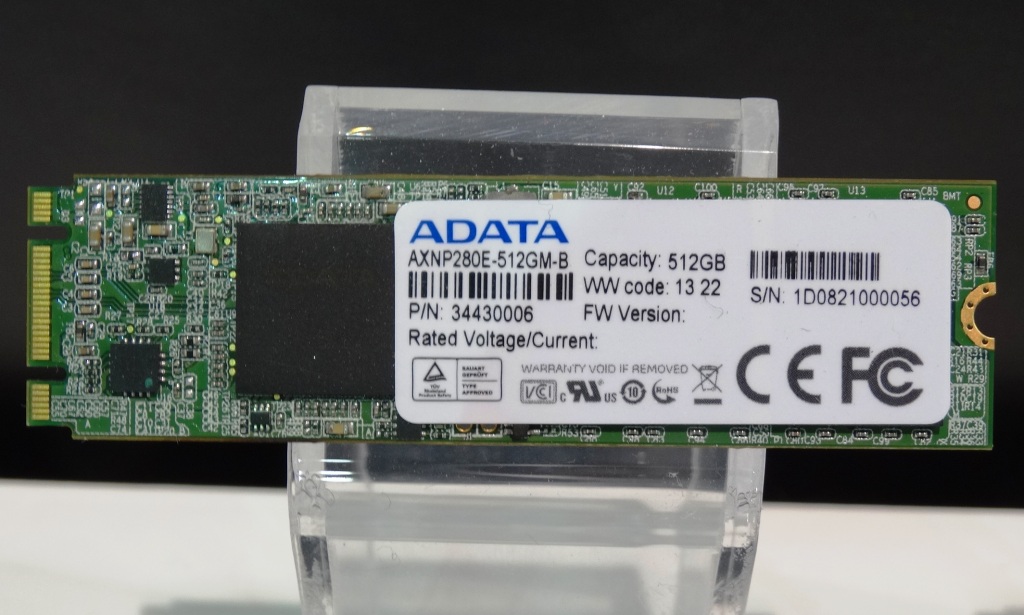SSDS 22X HIGHER SPEED THAN A HARD DRIVE
Consider what it is like when we see a a Maserati or Porsche pass us on the roadway. Imagine now that every vehicle on the road were of the same performance and your Maserati cost the same as just about any Ford or GM. Sure, much of that charm is lost but the simple fact is that the power you have under the hood has just increased significantly. This is what the new LSI Sandforce 3rd generation SSD can do for us. SandForce originally started the ball rolling a few years back by making data transfer speeds up to 275MB/s possible and then doubled that with SATA 3 at todays standard of 550MB/s.
Our exclusive discovery of the LSI SandForce Gen 3 SSD, this week at Computex, multiplies that by more than 3 times with speeds now reaching 1800MB/s. Up until today, even PC enthusiasts aspired for such speed and would spend endlessly just to attain that performance. In common terms, one could transfer a 1080p movie from one location to another in under 2 seconds. Up until this week, performance of such magnitude could not be imagined in the SSD industry and we are certain that this has knocked each and every SSD manufacturer on their heals as many expected 12Gbps to be the next level of performance.
12Gbps would account for speeds up to 1500MB/s whereas the new PCIe 2 x 4 interface used in ADATAs SSD sample speaks to speeds of 1800MB/s. In short, such advance completely restructures how we look at things as the SATA spec is no more than a bottle neck and cannot accomodate the full power of this new controller. Let’s not hold our breath though. The latest word we have is that the SSDs on display won’t be released until late Q3 or early Q4 2013 and, only then will we start to see transition with many manufacturers. Even while on display, there is no written verification of this being a LSI SandForce controller and both ADATA and LSI have gone to ground with what appears to be gag orders.
OTHER POINTS OF INTEREST FROM THE FLOOR
This years visit to Computex was expected to reveal little more than SSD companies transitioning to smaller memory with new branding a result, however, has been anything but. Contrary to the common belief that some companies might resist the NGFF standard, each and every manufacturer had their iteration of NGFF in some form with Plextor topping this out with their new M.2 design capable of 770MB/s performance while the NGFF interface supports PCIe Gen 2.
We also discovered that JMicron seems to be making a comeback and their value oriented SATA 3 controller was seen in the SSDs of a few manufacturers, displaying performance of 400MB/s read and 190MB/s write performance. JMicron has come a long way since their stuttering 602a controller that set the industry back leaps and bounds just a few years ago.
Add to this the fact that Marvell is definitely infringing on a bit of the LSI SandForce turf with new SSDs by such traditional SandForce devotees relating that the Marvell solution allows much more flexibility for their in house firmware expertise. Last but not least we were surprised to see new SSDs containing Silicon Motion controllers and we didn’t see any examples of Phison solutions whatsoever.
 The SSD Review The Worlds Dedicated SSD Education and Review Resource |
The SSD Review The Worlds Dedicated SSD Education and Review Resource | 


Based on comments on your previous LSI post, someone (possibly from LSI?) seemed to take exception to your revelation.
Devices in DEVSLP will not update while in that state. There are different levels of sleep/hibernation. DEVSLP is the lowest. The device is essentially off, but ready to resume within a quarter of a second. This deep level of sleep will not allow updating, whereas lighter levels of traditional sleep will. This is all in the Ultrabook Spec, and has nothing to do with DEVSLP.
Thank you for your input. The SATA Devslp spec (listed below) accounts for exactly as we describe above and is not simply a means of shutting a system down in an ultra low mode. Our description and article comes from discussion with several industry professionals as well as the SATA Devslp spec here: https://www.sata-io.org/documents/SATA-DevSleep-and-RTD3-WP.pdf
You are correct in your statements that it does shut the system down to an ultra low mode but a review of the document will describe the different levels of devslp and what can be accomplished at each.
“DevSleep enables hosts and devices to completely shut down the SATA interface” –That is from that document. I’ve already read every word of that, and nowhere does it say it updates while in DEXSLP. I haven’t seen that anywhere.
“The DevSleep specification allows implementers flexibility regarding what the device actually does when the DEVSLP signal is asserted. The device may completely power down its PHY, and it may also choose to power down other subsystems, as long as it can meet the exit latency requirements.”
Today we see an excellent example of this in the new MacAir. Although it can go into a deep sleep mode, enabling Power Nap enables the system to continuously update while in that mode:
https://www.apple.com/ca/macbook-air/features.html
This is exactly as we spoke and as has been described by integral industry professionals.